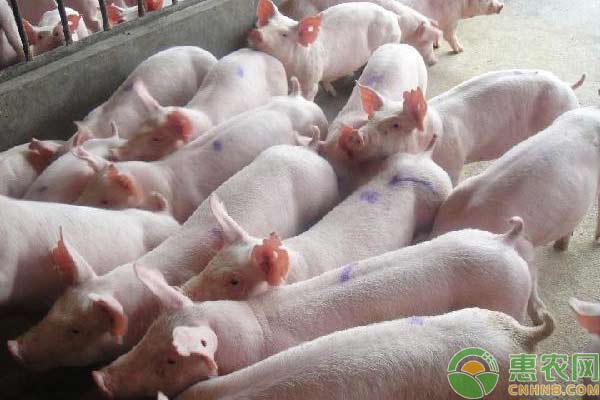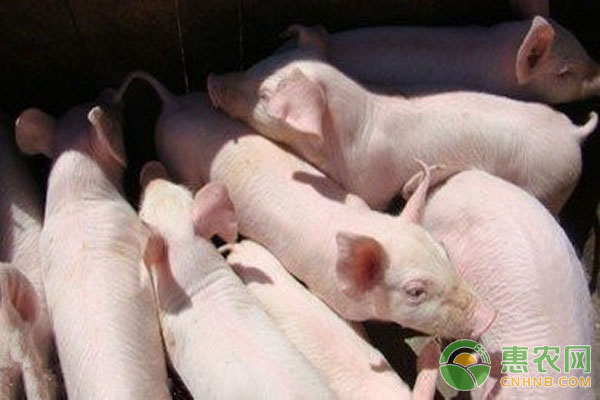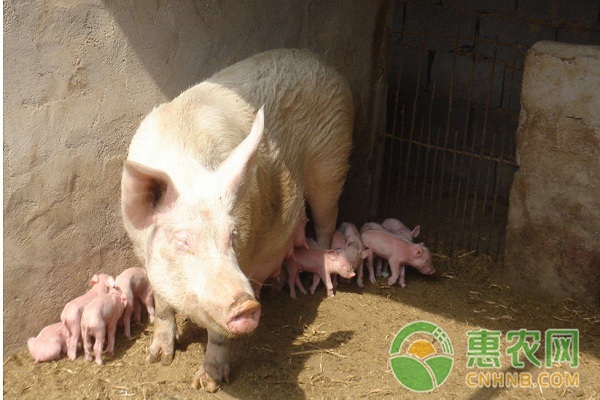The existence of swine fever has been more than 70 years old. At present, swine fever has become one of the four major A-class animal diseases in China. In the 1950s, China proposed a plan to eliminate swine fever. However, until now, China continues to popularize swine fever every year. Therefore, there is a long way to go to control and eliminate piglets. Let's take a look at how to prevent pigs.

First, the clinical symptoms of swine fever
According to clinical symptoms, it can be divided into four types: the most acute, acute, chronic and mild.
The most acute type
Sick pigs often have no obvious symptoms and suddenly die.
2. Acute type
The sick pig spirit is poor, the body temperature rises between 40-42 °C, showing the heat of detention, fear of cold, bunching, bow back, slow movement. Purulent conjunctivitis, severe upper and lower eyelid adhesions, can not open. Loss of appetite or abolishment, thirst, like to drink dirty water, and some vomiting. Initial constipation, dry hard fecal ball surface with a lot of white mucus, late diarrhea, fecal odor, with mucus or blood, and some constipation and diarrhea alternate. There are needle-shaped bleeding spots or bleeding spots of different sizes on the nasal end of the pig, the back of the ear, the abdomen and the skin inside the limbs, and the finger pressure does not fade. The hind limbs are weak, can not stand or walk and shake, some pigs show neurological symptoms, showing molars, receding, turning circles, straight and swimming, and even coma. The boar foreskin is inflamed, the vaginal sheath accumulates urine, and there is a foul odor and turbid liquid when it is squeezed by hand.
3. Chronic type
Mostly from the acute type, the body temperature is high and low. Loss of appetite, necrotic enteritis, constipation and diarrhea alternately, gradually losing weight, anemia, weakness, rough hair, walking hind limbs shaking weak, walking unstable. Some pigs have blue-purple or necrotic and shedding at the tip of the ear, tail and lower limbs. The course of disease can last for more than a month, chronic arthritis, and finally debilitating death.
4. Mild type
Also known as atypical, the main reason for the formation of warm pigs:
(1) The swine fever virus mutates and produces attenuated strains that are pathogenic;
(2) The immunization program of the attenuated vaccine of swine fever has an error, and the placental infection is caused by the injection of attenuated swine fever vaccine in the sow during pregnancy;
(3) Insufficient dose of swine fever attenuated vaccine;
(4) Improper quality and operation of the vaccine;
(5) The presence of immunosuppressive diseases (such as blue ear disease, pseudorabies) in the herd and feeding of mycotoxin feed causes the immune failure of the swine fever to occur in mild swine fever.
The main clinical problems are reproductive disorders in sows, and there are prevalence of latent or latent infections in venomous sows. Infected sows usually do not exhibit clinical signs and pathological changes visible to the naked eye. However, it constantly detoxifies the body or transmits the virus to the fetus through the placenta. Attenuated strains from piglets infected with placenta, re-infected pregnant sows, virus re-infected piglets through the placenta, causing pregnancy sows with poison syndrome, premature birth, stillbirth, mummies, weakened piglets and piglets with purple skin, congenital Sexual trembling and so on. The symptoms of piglets or fat pigs are mild, atypical, mild, and the pathological changes are not obvious. The long-term temperature is kept at 40 °C, the skin has no bleeding, but there is congestion and necrosis, the appetite is good and bad, and the feces are dry. Rare, sick pigs are very thin, with a high mortality rate and resistance, but their growth and development are severely hindered.

Second, effective prevention and control measures for swine fever
1. Implement breeding pig breeding measures
The transmission route of the virus-bearing sow virus includes: vertical transmission and horizontal transmission.
The transmission method of the poisonous boar swine fever virus can be horizontally spread, or can be transmitted to the sow through breeding or semen, and then the piglets can be vertically infected by the sow, and the poisoned piglets can again pass the horizontal propagation mode or the vertical propagation mode. Spread piglets.
The above transmission route has caused the continuous infection of the swine fever virus. Of course, this is also one of the main causes of the long-term persistence of swine fever in China and the vicious cycle of swine fever virus. Based on the above analysis, it is very necessary to grasp the status of infection and immunity through the detection of breeding herds. The infected pigs must be resolutely eliminated. Relevant agencies and staff should also comprehensively and effectively combine prevention and control measures such as disinfection, antibody monitoring, harmless treatment and rational immunization, and continuously purify the breeding herds and do their utmost to establish No poisonous healthy population.
2. Strengthen immune surveillance
In order to reduce the prevalence of swine fever, one of the most important means adopted by China at this stage is immune surveillance. Immune surveillance requires periodic sampling of immunized herds, with a focus on whether the herd antibodies have reached the specified level of protection. At present, the commonly used immunological monitoring methods include the H. pylori immune antibody PPA-ELSIA monitoring method and the indirect indirect hemagglutination test (IHA) monitoring antibody method. According to relevant research, both the PPA-ELSIA method and the IHA method can fully and scientifically reflect the immune protection level of pigs and the risk of hidden infections. To this end, in the actual application of the production process, the pigs should be monitored on a regular basis to ensure that the overall immune status of the pigs is obtained in the first place. Once the OD490 value drops to 0.3 or the antibody titer drops to 6log2, the immune replanting measures should be taken immediately, and the pigs with low immune response ability should be eliminated decisively, thus eliminating the occurrence of immune failure and minimizing or even completely Avoid the presence of cryptic pigs with hidden infections. It should be noted that most piglets cannot produce effective immunity after being injected with the vaccine because of the interference of the maternal antibody. It is also likely to be infected by the virus to a large extent, and it is prone to so-called immune failure. In addition, because there is a certain difference in the immune status of each pig farm, the use of immunological monitoring methods to fully grasp the growth and decline of maternal antibodies can lay a good foundation for the farm to develop a reasonable immunization program, and provide adequate Basis.
3. Strengthen pathogen monitoring
The monitoring of pathogens is at the most important foundation in the prevention and treatment of disease. Based on the analysis of the characteristics of the current incidence of swine fever in China, the distribution pattern of swine fever in China is mainly distributed in the form of spots, and the number of typical cases is relatively small, while the number of non-typical swine cases is a large proportion. It is precisely because piglets are mostly distributed in spots, and they cause fewer deaths. Therefore, the relevant veterinary epidemic prevention departments and farm owners often ignore the prevention and control of piglets, which leads to the long-term persistence of piglets. Based on the above reasons, strengthening the monitoring of swine fever pathogens can not only encourage the farm owners and related veterinary epidemic prevention departments to control the actual existence of swine fever virus, but also urge the relevant staff and management personnel to attach great importance to the prevention and control of hog fever. And help to understand the genetic variation of the epidemic strains in a timely manner, and help scientifically process and control the prevalence of new strains or new strains. This will also provide the government with decision-making on prevention and control of piglets. Scientific data.
4. Investigation of wild boar swine fever virus infection
Similar to domestic pigs, wild boars are also susceptible to swine fever virus. Through a large number of investigations and studies, it can be shown that the swine fever virus has long-term existence in the wild boar population and persistent infection. In fact, wild boar is the natural storage host of the swine fever virus, and it is also one of the most important sources of infection in the EU countries. For China, due to the wide distribution of wild boars and the ban on hunting protection issued by China, the number of wild boars in China is increasing, and the opportunities for contact with domestic pigs are also increasing. For example, wild boars often affect farmland. There are reports. On the other hand, because wild boars are more delicious to eat, the number of farms where wild boars are used for food consumption is increasing all over the country, which has led to a gradual increase in the transportation and trading of wild boars in different regions. However, the quarantine of wild boar has not yet formulated specific and comprehensive provisions. The epidemiological survey data on wild boar infection with swine fever virus is relatively lacking. Therefore, in order to strengthen the prevention and control of swine fever, it is necessary to infect wild boar pig swine fever virus. The investigation of the situation will have a positive guiding effect on the promotion of China's piglet prevention and control work.

Third, the characteristics of swine fever
The incubation period for natural infections is usually 5-10 days, the shortest is only 2 days, and the longest is 21 days. The disease is only infected with pigs and wild pigs under natural conditions, and is susceptible to different ages, genders and varieties. At present, the swine industry is developing rapidly, and the vaccine is continuously immunized. The seasonality of swine fever is not obvious. It can occur all year round, but it is mostly in spring, autumn and winter. Sick pigs are the main source of infection, sick pig excreta and secretions, dead pigs and organs and corpses, blood, meat, internal organs, waste water, waste contaminated feed, drinking water can spread the virus. Mainly through the digestive tract infection, but also through the respiratory tract, eye and nasal mucosa and skin wound infection. Piglets are mainly transmitted through direct contact, and can also infect the fetus vertically through the placenta, resulting in weak piglets, stillbirths, and mummified fetuses.
The above are the clinical symptoms and epidemic characteristics and prevention measures of swine fever. In order to strictly control the spread of swine fever virus and minimize and avoid swine fever, it is necessary to conscientiously implement the purification measures of breeding herds, strengthen the monitoring of immunological monitoring and pathogens, and conduct in-depth investigations on the infection of wild boar swine fever virus.
Powder Spice Five,Spice Powder Five,Spices Powder Five,Mix Powder Five Spice
jiangmen city hongsing food co., ltd. , https://www.jmhongsing.com